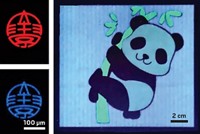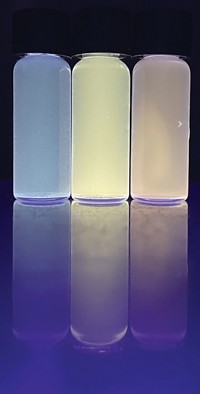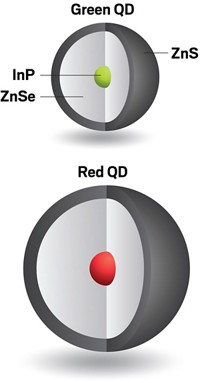Advertisement
Grab your lab coat. Let's get started
Welcome!
Welcome!
Create an account below to get 6 C&EN articles per month, receive newsletters and more - all free.
It seems this is your first time logging in online. Please enter the following information to continue.
As an ACS member you automatically get access to this site. All we need is few more details to create your reading experience.
Not you? Sign in with a different account.
Not you? Sign in with a different account.
ERROR 1
ERROR 1
ERROR 2
ERROR 2
ERROR 2
ERROR 2
ERROR 2
Password and Confirm password must match.
If you have an ACS member number, please enter it here so we can link this account to your membership. (optional)
ERROR 2
ACS values your privacy. By submitting your information, you are gaining access to C&EN and subscribing to our weekly newsletter. We use the information you provide to make your reading experience better, and we will never sell your data to third party members.
Materials
Quantum Dot Mystery Resolved
A secondary phosphine in the starting material seems to be key to forming PbSe nanomaterials
by Celia Henry Arnaud
August 9, 2010
| A version of this story appeared in
Volume 88, Issue 32

The mechanism of quantum dot formation may not be what people thought, a study reveals (J. Am. Chem. Soc., DOI: 10.1021/ja103805s). A common source of selenium for the synthesis of CdSe or PbSe quantum dots is trioctylphosphine selenide (TOPSe). But when Todd D. Krauss, Christopher M. Evans, and Meagan E. Evans of the University of Rochester combined high-purity TOPSe with Pb(oleate)2, they saw no quantum dot formation. Adding a secondary phosphine to the high-purity TOPSe sped up the reaction rate and caused PbSe quantum dots to form. In addition, TOPSe derived from commercial-grade trioctylphosphine typically used for quantum dot syntheses contains dioctylphosphine selenide as an impurity, which immediately disappears upon combination with a metal carboxylate. The Rochester team suggests that the secondary phosphine may be the actual reactive species in TOPSe, whereas TOPSe itself serves only as a soluble source of selenium that is capable of selenium exchange with more reactive species. The researchers believe their results explain the irreproducibility and poor yields for conventional quantum dot syntheses.





Join the conversation
Contact the reporter
Submit a Letter to the Editor for publication
Engage with us on Twitter